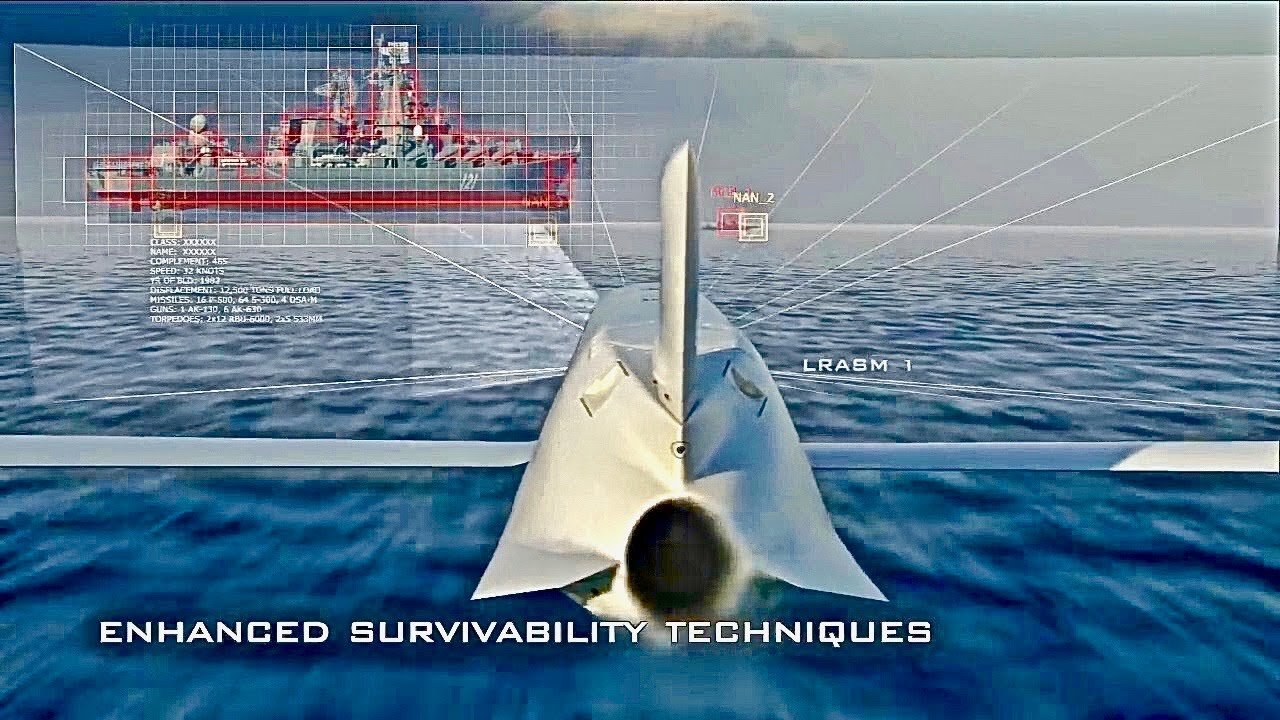Premium Only Content

U.S. Smart Missile - Worst Nightmare For Enemy Navy Ships - China & Russia - Animation
LRASM: Long Range Anti-Ship Missile -- LRASM is a long range, precision-guided anti-ship missile leveraging off of the successful JASSM-ER heritage, and is designed to meet the needs of U.S. Navy and Air Force warfighters. Armed with a penetrator and blast fragmentation warhead, LRASM employs precision routing and guidance, day or night in all weather conditions. The missile employs a multi-modal sensor suite, weapon data link, and enhanced digital anti-jam Global Positioning System to detect and destroy specific targets within a group of numerous ships at sea.
Background
Lockheed Martin is currently executing on the Accelerated Acquisition contract for the LRASM Deployment Office. This contract is further maturing the technologies that will be delivered as an early operational capability in LRASM for the USAF B-1B and USN F/A-18E/F in 2018 and 2019 respectively. This operational capability will provide our warfighter with the solution to their anti-surface warfare capability gap. We have begun the integration efforts onto the F/A-18E/F Super Hornet. Fit and mass properties checks were conducted at Pax River Naval Base with the U.S. Navy and captive-carry flight tests took place in 4Q15. We are also investing company funds to reduce risk of a surface-launch variant that will be used by the VLS currently in the fleet.
LRASM technology will reduce dependence on ISR platforms, network links, and GPS navigation in aggressive electronic warfare environments. This advanced guidance operation means the weapon can use gross target cueing data to find and destroy its pre-defined target in denied environments. Precision lethality against surface and land targets ensures the system will become an important addition to the US Navy warfighter’s arsenal. LRASM provides range, survivability, and lethality that no other current system provides.
LRASM Surface Launch flight test from the USN Self Defense Test Ship
On July 21, 2016, the third successful surface-launched LRASM test was conducted from the USN SDTS at Pt. Mugu Sea Range, CA. This test proved the missile’s ability to load mission data using the modified Tactical Tomahawk Weapon Control System (TTWCS+), and align mission data with the moving ship and launch from the MK 41 Vertical Launch System (VLS). During the test, LRASM exited the VLS launcher, cleanly separated from its Mk-114 booster and transitioned to the cruise phase. The missile successfully flew a pre-planned low-altitude profile collecting aerodynamics agility data while enroute to its pre-determined endpoint.
LRASM Boost Test Vehicle flight from Mk 41 Vertical Launch System
The successful LRASM Boosted Test Vehicle (BTV) flight on 4 Sep '13 at WSMR Desert Ship Range, demonstrated a LRASM launch from a MK 41 VLS canister using the proven Mk-114 booster. Lockheed Martin is investing in the surface-launch LRASM effort to reduce program risk and accelerate time to fielding an OASuW capability on US Navy surface combatants. LRASM can be employed from DDGs and CGs with only software modifications to existing launch control systems. LRASM is the low-risk and low-cost solution for our naval warfighter.
-
 3:39
3:39
Knowledge Land
2 months agoYour Personal Flying Scooter - Airbike Is Here - Volonaut
29 -
 1:32
1:32
Gaming on Rumble
11 hours agoWhat is the Rumble Creator Program?!?! | Lvl UP
21.9K4 -

Flyover Conservatives
23 hours ago9/11 on Steroids: What’s Coming This Fall? - Bo Polny | FOC Show
40.6K3 -
 1:01:28
1:01:28
Precision Rifle Network
9 hours agoS4E27 Guns & Grub - Let's Talk About Gas Guns
15K1 -
 59:29
59:29
The Charlie Kirk Show
4 hours agoTHOUGHTCRIME Ep. 96 — The Great Flag Burning Debate
42.1K34 -
 57:56
57:56
The Mel K Show
4 hours agoMel K & General Mike Flynn | Betrayal of a Nation: Soros’ NATO World Order | 8-28-25
26.3K26 -
 2:13:31
2:13:31
Joker Effect
3 hours agoInterviewing BEN JAMMINS! A personality with over 1 BILLION gif views. Let's give him a warm welcome
13.2K1 -
 11:37
11:37
Robbi On The Record
9 hours agoThe Devil is in the Branding..
16.3K9 -
 1:26:44
1:26:44
Savanah Hernandez
5 hours agoWhy Gen-Z Is So Radicalized Against Immigration
13.4K6 -
 2:36:19
2:36:19
megimu32
4 hours agoOTS: From A-List to MIA! 90s & 2000s Stars Who Vanished
8.85K3